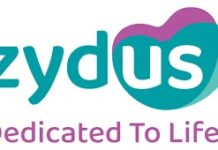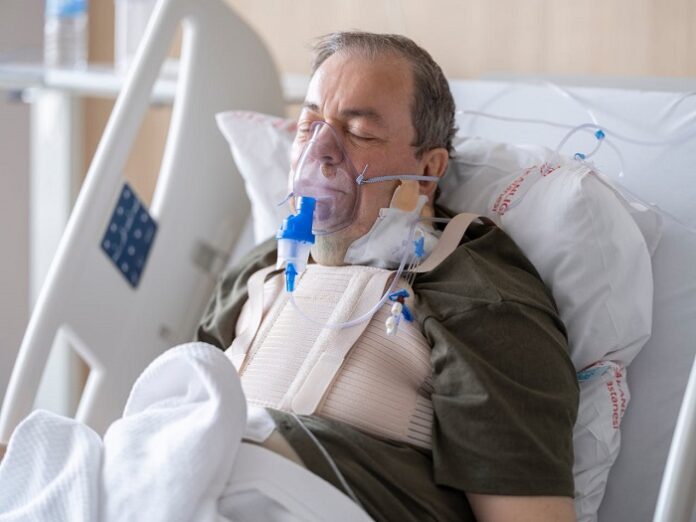Summary
The last 30 years have witnessed a twofold increase in the number of patients who have suffered stroke. We, as a nation in India, have also witnessed a steady increase in stroke cases, with stroke being the fourth leading cause of death and the fifth major cause of disability. Despite all the evidence, the rates for intravascular thrombolysis with tPA remained around 2%-10% of patients, although around 25% could be eligible for the same globally. The situation of endovascular thrombectomy in acute ischemic stroke patients with large vessel occlusions is further grim & complicated with negligible data visibility at the national level. The roadblocks in our scenario for optimal acute stroke care are multidimensional and multifactorial. A panoramic understanding of the stumbling blocks will pave the way for comprehensive stroke care in our country. Action points are required at all levels to streamline the process. To walk this talk is hopeful and encouraging at the same time a herculean task for us as a nation. Together, we are #Greater than Stroke.
Every three seconds one new person develops a stroke across the world. Stroke being the most common cause of disability, is also the second most common cause of death throughout the world. The last 30 years have witnessed a twofold increase in the number of patients who have suffered stroke. The affected age group is increasingly coming down with around 63% of stroke cases detected in less than 70 years of age in 2019. 89% of these global stroke-related deaths and disability are from low to middle-income countries (LMICs) and this further poses an excessive burden on their already limited resources. [1]
The top modifiable risk factors leading to stroke are hypertension, high body mass index, high blood sugar levels & hyperlipidemia. The other behavioral factors that contribute include smoking, poor diet, alcohol consumption, poor physical activity, etc. Of all the suspected stroke patients, 87% are ischemic caused by occlusion of blood vessels by thrombus, and the rest are due to bleeding either as intracranial hemorrhage (10%) or as subarachnoid hemorrhage (3%).[2]The COVID-19 pandemic further aggravated the stroke situation globally by amounting to an increase in large vessel occlusion and mortality. [3]
We as a nation in India have also witnessed a steady increase in stroke cases with stroke being the fourth leading cause of death and the fifth major cause of disability. [4]
The mean age of stroke survivors is younger in India, with almost one-fifth of acute stroke patients being under 40 years causing a paramount effect on the patient’s earning capacity and financial well-being of the family. [5] However, even this data is a very modest estimate of true stroke incidence in our country due to the lack of uniform data across the entire geographical boundaries.
Though stroke has been prevalent for centuries, the management protocols have always been symptomatic and conservative. The landmark NINDS trial of 1995 hallmarked the prototype shift in the management of acute ischemic strokes proving intravenous thrombolysis (IVT) with tissue-pasminogen Activator (tPA) within three hours of onset significantly improved functional outcome at 90 days. [6] This time window was further extended to up to 4.5 hours from symptom onset by the ECASS III Trial in 2008 and was efficacious in improving neurological outcomes.[7]
Subsequently, the meta-analysis done in 2014 of all randomized trials depicted an increase in benefit with earlier treatment with tPA which remained statistically significant up to 4.5 hours of symptom onset regardless of the age and severity of stroke symptoms.[8] Despite all the evidence, the rates for IVT with tPA remained around 2%-10% of patients, although around 25% could be eligible for the same globally. [9]There was
1Clinical Head and Consultant, Emergency Medicine Department, Bharati Vidyapeeth, Pune
Corresponding author: Dr. Shweta Tyagi,Clinical Head and Consultant, Emergency Medicine Department, Bharati Vidyapeeth, Pune Email:shwrah@gmail.com
a need to develop an organizational protocol-based culture involving multidisciplinary stroke teams and community awareness to be able to administer tPA to more and more eligible patients as early as possible to maximize the benefits. The 2013ASA/AHA guidelines recommended tPA for eligible patients as quickly as possible, ideally within 60 minutes of arrival at the hospital. (CLASS IA).[10] Recently EXTEND-IA TNK trial published in 2018 recommended Tenecteplase as a non-inferior alternative to tPA and this bolus administration obviates the need for infusion as in tPA. [11]
Pooled data from 6 recent randomized trials of Endovascular Thrombectomy (EVT) recommended this intervention for acute ischemic stroke patients with large vessel occlusion (LVO) in addition to thrombolysis if eligible. The benefit was proven more likely when initiated within 6 hours, however, the window could be extended up to 24 hours after imaging confirmation of salvageable penumbra of brain tissue. [12] DAWN trial revealed a number needed to treat (NNT) of 2 for disability at 90 days &NNT of 2.8 for functional independence, further adding to the evidence of the efficacy of EVT. [13]
Similar to global data, IVT of the number of eligible patients in India is estimated far low around 11.5% and this does not reveal the national picture as the data is fragmented and localized to few institutes and locations. [14] The situation of EVT in acute ischemic stroke patients with large vessel occlusions is further grim & complicated with negligible data visibility at the national level.
The roadblocks in our scenario for optimal acute stroke care are multidimensional and multifactorial.
- Patient-related factors like lack of community awareness result in late presentations, financial constraints & social beliefs leading to delayed consent for treatment. Precious time gets lost in first consultations at primary clinics and eventual referrals.
- Therapy-related factors like brief window period, high cost for IVT & EVT followed by the need for a critical care unit, limited centers equipped with infrastructure for EVT, and round-the-clock availability of neuro interventionists.
- Health system-related factors such as lack of adequate medical equipment and expert personnel at grass root levels for identifying and escalating care of acute stroke patients, lack of standardized & uniform policies, the limited number of neurologists, neuro interventionists, trained stroke teams, lack of safe referral facilities and delays in transition because of the rural-urban divide
- Regulatory authorities-related factors like adequate allocation of resources to support stroke patients for affordable and accessible care in a time-bound manner.This panoramic understanding of the stumbling blocks will pave the way for comprehensive stroke care in our country. Action points are required at all levels to streamline the process.
- Extensive awareness campaigns highlighting how to identify stroke and why time is critical in stroke management at regional and national levels using all platforms like social media, television, radio, etc. These campaigns should also focus on high-risk factors that can be modified and help in reducing the risk of occurrence of stroke.
- Utilizing technology and artificial intelligence to our advantage by integrating with Google Maps to create Stroke maps which would guide to the nearest stroke-ready center. With the movement of Digital India and we being one of the fastest developing economies, Smartphones are now ubiquitous. They can be put to use by the aid of stroke apps to guide the citizens. Tele-medicine units for remote stroke management assistance to primary care physicians by neurologists. CT-equipped mobile stroke units can aid in access to imaging in remote areas to guide therapy.
- A Centralized pool of ambulance services manned by trained paramedics can also function as a National Stroke helpline for assistance and prompt referrals in a safe way.
- Establishing Emergency Departments that are well-equipped and manned by trained Emergency physicians can expedite the process of triage, detection, management, and disposition of acute stroke patients in a timely protocol-based manner. Developing Stroke units can further improve stroke care under one roof. National stroke certification programs and specific funding can be motivating at organizational levels to ensure best practices.
- Brief and mandatory stroke management training for all treating physicians and primary health care providers.
- A Centralized pool of MRI and/or CT scans and trained manpower including stroke specialists both in the private sector and in the government sector which can be utilized in acute care can be made available on the National Stroke helpline.
- Diligent planning for the augmentation of EVT centers and the availability of skilled manpower is necessary both in the public and private sectors.
- Fostering stroke research indigenously on our patient presentations, typical risk factors, and clinical outcomes will provide valuable insights based on our ethnicity and geographical location.
- Measures taken by regulatory authorities like including stroke as a part of the National Program for Prevention and Control, initiating a stroke registry in 2012, and the Indo-US collaborative stroke registry can organize the data maintenance for acute stroke cases. Policies like Ayushman Bharat, Pradhan Mantri Bhartiya Janaushadhi Pariyojana, Mukhya Mantri Nishulk Dawa Yojana, Mahatma Jyotirao Pule Jan Arogya Yojana are the steps in the direction of ensuring drug availability and making the stroke care affordable for lower socio-economic group. [15]
To walk this talk is hopeful and encouraging at the same time a herculean task for us as a nation. We are on the right path of progress but the bottlenecks that pose challenges are public education, limited resources, a large rural-urban divide, and priority by regulatory authorities. Devising ways by taking these challenges in stride to pave the way for accessible and affordable stroke care in India will be a game changer and echoes the theme of World Stroke Day 2023 celebrated every year on 29th October; Together we are #Greater than Stroke.
References
- Feigin VL, Brainin M, Norrving B, Martins S, Sacco RL, Hacke W, Fisher M, Pandian J, Lindsay P. World Stroke Organization (WSO): Global Stroke Fact Sheet 2022. Int J Stroke. 2022 Jan;17(1):18-29. doi: 10.1177/17474930211065917. Erratum in: Int J Stroke. 2022 Apr;17(4):478. PMID: 34986727.
- GBD Stroke Collaborators. Global, regional, and national burden of stroke and its risk factors, 1990-2019: a systematic analysis for the Global Burden of Disease Study 2019.Lancet Neurol. 2021; 20:795–820. doi: 10.1016/S1474-4422(21)00252-0
- Markus HS, Martins S. COVID-19 and stroke: understanding the relationship and adapting services: a global World Stroke Organisationperspective.Int J Stroke. 2021; 16:241–247. doi: 10.1177/174749302110053734.
- Jones SP, Baqai K, Clegg A, et al. Stroke in India: A systematic review of the incidence, prevalence, and case fatality. International Journal of Stroke. 2022;17(2):132-140. doi:10.1177/17474930211027834
- Tripathi M and Vibha D. Stroke in young in India. Stroke Res Treatment 2010; 2011: 368629. doi:10.4061/2011/368629.
- National Institute of Neurological Disorders and Stroke rt-PA Stroke Study Group. N Engl J Med. 1995; 333:1581–87. 10.1056/NEJM199512143332401
- Hacke W, Kaste M, Bluhmki E, Brozman M, Dávalos A, Guidetti D, Larrue V, Lees KR, Medeghri Z, Machnig T, Schneider D, von Kummer R, Wahlgren N, Toni D; ECASS Investigators. Thrombolysis with alteplase 3 to 4.5 hours after acute ischemic stroke. N Engl J Med. 2008 Sep 25;359(13):1317-29. doi: 10.1056/NEJMoa0804656. PMID: 18815396.
- Emberson J, Lees KR, Lyden P, Blackwell L, Albers G, Bluhmki E, Brott T, Cohen G, Davis S, Donnan G, Grotta J, Howard G, Kaste M, Koga M, von Kummer R, Lansberg M, Lindley RI, Murray G, Olivot JM, Parsons M, Tilley B, Toni D, Toyoda K, Wahlgren N, Wardlaw J, Whiteley W, del Zoppo GJ, Baigent C, Sandercock P, Hacke W; Stroke Thrombolysis Trialists’ Collaborative Group. Effect of treatment delay, age, and stroke severity on the effects of intravenous thrombolysis with alteplase for acute ischaemicstroke: a meta-analysis of individual patient data from randomised trials. Lancet. 2014 Nov 29;384(9958):1929-35. doi: 10.1016/S0140-6736(14)60584-5. Epub 2014 Aug 5. PMID: 25106063; PMCID: PMC4441266.
- van Wijngaarden JD, Dirks M, Huijsman R, Niessen LW, Fabbricotti IN, Dippel DW; Promoting Acute Thrombolysis for Ischaemic Stroke (PRACTISE) Investigators. Hospital rates of thrombolysis for acute ischemic stroke: the influence of organizational culture. Stroke. 2009 Oct;40(10):3390-2. doi: 10.1161/STROKEAHA.109.559492. Epub 2009 Aug 27. PMID: 19713539.
- Jauch EC, et al. “Guidelines for the early management of patients with acute ischemic stroke: A guideline for healthcare professionals from the American Heart Association/American Stroke Association.” Stroke.2013;44:870-947.
- Campbell BCV, Mitchell PJ, Churilov L, Yassi N, Kleinig TJ, Dowling RJ, Yan B, Bush SJ, Dewey HM, Thijs V, et al; EXTEND-IA TNK Investigators. Tenecteplase versus alteplase before thrombectomy for ischemic stroke. N Engl J Med. 2018;378:1573–1582. doi: 10.1056/NEJMoa1716405
- Campbell BCV, Donnan GA, Lees KR, Hacke W, Khatri P, Hill MD, Goyal M, Mitchell PJ, Saver JL, Diener HC, Davis SM. Endovascular stent thrombectomy: the new standard of care for large vessel ischaemic stroke. Lancet Neurol. 2015 Aug;14(8):846-854. doi: 10.1016/S1474-4422(15)00140-4. Epub 2015 Jun 25. PMID: 26119323.
- Nogueira RG, Jadhav AP, Haussen DC, et al. Thrombectomy 6 to 24 hours after stroke with a mismatch between deficit and infarct. N Engl J Med 2018; 378: 11–21
- Li Z, Pandian J, Sylaja PN, Wang Y, Zhao X, Liu L, et al. Quality of care for ischemic stroke in China vs India: findings from national clinical registries.Neurology. 2018; 91:e1348–e1354. doi: 10.1212/WNL.
- Srivastava MVP, Bhatia R, Vishnu VY, Goyal M. Essential Workflow and Performance Measures for Optimizing Acute Ischemic Stroke Treatment in India. Stroke. 2020 Jul;51(7):1969-1977. doi: 10.1161/STROKEAHA.119.026733. Epub 2020 Jun 17. PMID: 32568638.
























